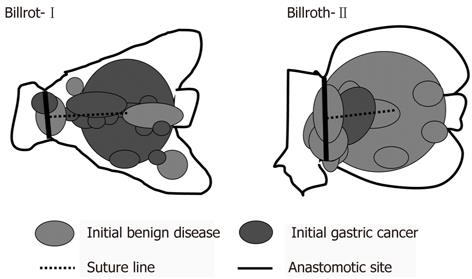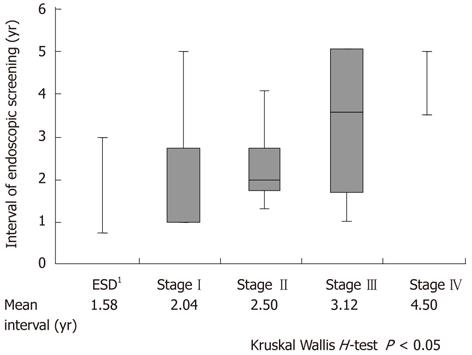Copyright
©2012 Baishideng Publishing Group Co.
World J Gastroenterol. Jun 14, 2012; 18(22): 2832-2836
Published online Jun 14, 2012. doi: 10.3748/wjg.v18.i22.2832
Published online Jun 14, 2012. doi: 10.3748/wjg.v18.i22.2832
Figure 1 Location of 32 remnant gastric cancer tumors following distal gastrectomy according to the method of reconstruction.
After Billroth-I reconstruction, remnant gastric cancer (RGC) occurred more frequently near the suture line and remnant gastric wall; whereas, RGC after Billroth-II reconstruction occurred more frequently at the anastomotic site.
Figure 2 Association of endoscopic follow-up intervals and the stage of progression.
The follow-up interval was significantly associated with the stage of progression in remnant gastric cancer (P < 0.05). 1Patients treated with endoscopic submucosal dissection (ESD), who were not included in this study, are presented for the purpose of comparison.
- Citation: Komatsu S, Ichikawa D, Okamoto K, Ikoma D, Tsujiura M, Nishimura Y, Murayama Y, Shiozaki A, Ikoma H, Kuriu Y, Nakanishi M, Fujiwara H, Ochiai T, Kokuba Y, Otsuji E. Progression of remnant gastric cancer is associated with duration of follow-up following distal gastrectomy. World J Gastroenterol 2012; 18(22): 2832-2836
- URL: https://www.wjgnet.com/1007-9327/full/v18/i22/2832.htm
- DOI: https://dx.doi.org/10.3748/wjg.v18.i22.2832










